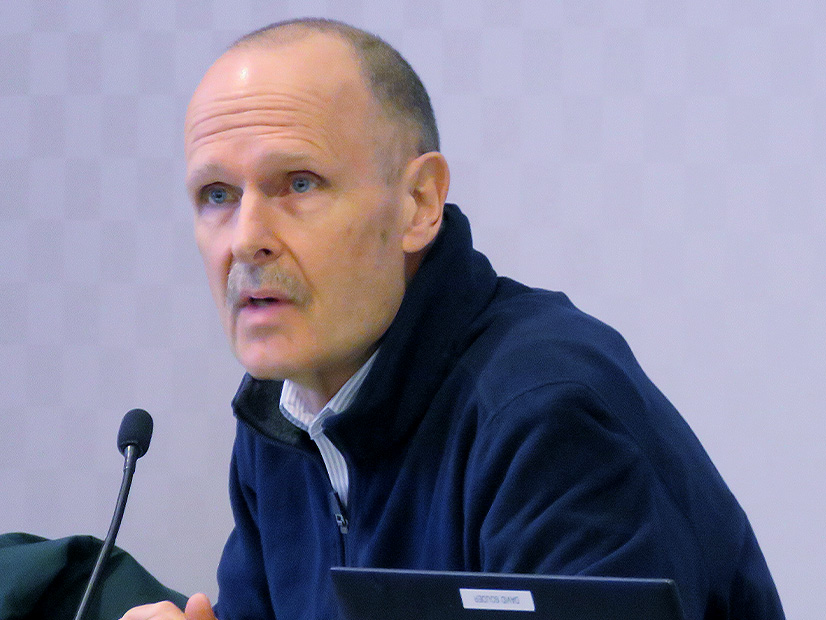No Consensus on IROL-CIP Cost Recovery
VALLEY FORGE, Pa. — PJM and its Independent Market Monitor gave first reads of their proposals exploring whether generators should be permitted to recover upgrade costs for facilities determined critical for interconnection reliability operating limits (IROLs) under NERC Critical Infrastructure Protection (CIP) standards.
PJM’s proposal would create a cost recovery mechanism similar to black start service, where expenses can be submitted to both the RTO and Monitor for review and monthly payments would be made from revenue socialized across the RTO. PJM argued that the investments needed to comply with the standards are above what is typically required of generators and there is not a sufficient look-ahead in the analysis its staff does to identify critical facilities for a generator to include its expenses in future Base Residual Auction (BRA) offers. (See “Revisions to IROL CIP Issue Charge Rejected,” PJM Operating Committee Briefs: Dec. 8, 2022.)
 PJM Chief Information Security Officer Steve McElwee | © RTO Insider LLC
PJM Chief Information Security Officer Steve McElwee | © RTO Insider LLCIMM Joseph Bowring said the concept of “cost recovery” is part of the old-fashioned cost-of-service regulatory model that is not relevant to markets. Bowring said it’s already possible for generators to represent their IROL-CIP costs in market offers and it would be inappropriate to create out-of-market cost recovery for the expenses. His proposal would memorialize that there is no cost recovery structure in PJM’s governing documents.
“PJM runs markets,” he said. “PJM is not a regulator.”
Rather than this being an issue for PJM to resolve, Bowring said generators should bear the costs. He compared the situation to investments facilities must make to comply with environmental regulations. No separate cost recovery mechanism was created for those costs, even though they were much larger than the IROL-CIP costs. Bowring also noted that there is no profitability test and that PJM plan proponents have no idea whether the identified generators are already more than covering all costs.
Greg Poulos, of the Consumer Advocates of the PJM States (CAPS), said state advocates are interested in seeing the most reasonable and best costs realized through markets. Creating cost-of-service structures creates a pathway for market participants to argue that each of their unique characteristics is a service that should be compensated.
Jim Davis of Dominion Energy said the comparison to black start is flawed because it is a voluntary service, while IROL-CIP critical status is determined by PJM. He said since that status is reevaluated annually, a facility may undergo significant upgrades only to have its critical marker removed after 12 months.
“The risk those resources have is [that] the rug could be pulled out from under them at the very last minute and have their status reverted back to low,” he said.
Security Update
PJM’s Steve McElwee urged stakeholders to be on the lookout for hackers impersonating known figures and report any suspicious activity to the RTO. He said members recently reported a “phishing” attempt impersonating PJM staff and contacting members saying their accounts are being suspended.
“It really is that partnership for us to be working together,” he said.
Dynamic Line Rating Task Force Update
Stakeholders endorsed the conclusion of the Dynamic Line Rating (DLR) Task Force following the wrap-up of the group’s work providing education as stakeholders and PJM drafted and implemented a new framework to incorporate the technology into its operations.
PJM’s Natalie Tacka Furtaw told the OC that if future issues related to DLR arise, they can be addressed with a new problem statement and issue charge.
Stakeholders approved a problem statement and issue charge alongside a proposed solution under PJM’s “quick fix” process at the April 2022 OC, and PPL went live with the technology in October. The task force continued to monitor the implementation of DLR and its impact to auction revenue rights and financial transmission rights trading; however, there have not been any new requests for information since its December meeting. (See “Dynamic Rating Issue Endorsed,” PJM Operating Committee Briefs: April 14, 2022)
Fuel Supply Overview
Fuel inventories are moving in the right direction, despite natural gas well freeze-offs and the derailment of a train in Ohio disrupting a major cog in the rail system for the eastern PJM region, Brian Fitzpatrick, PJM’s principal fuel supply strategist, told the OC. With stockpiles improving and major transportation risks averted, namely the potential for a railroad strike, PJM is shifting to collecting inventory data biweekly rather than weekly.
“Generally speaking, we’re starting to see an increase back in onsite inventories,” he said.
A cold snap over Feb. 2-4 resulted in freeze-offs amounting to around 2 bcf/d in Appalachian supply, but mild weather has helped build a nearly 7% inventory surplus relative to the five-year average. Fitzpatrick said the impact to supply was minor compared to Winter Storm Elliott, which caused the loss of 10-11 bcf/d. Aside from the Dec. 23-24 storm, he said it has been an otherwise smooth winter for natural gas thus far.
The derailment of a Norfolk Southern train in East Palestine, Ohio, has not caused major issues transporting coal, and Appalachian production remains around 5% above last year’s outputs.
The mild winter has also helped East Coast inventories of diesel and residual fuel oil recover from being notably below the five-year average throughout 2022.




